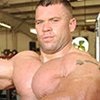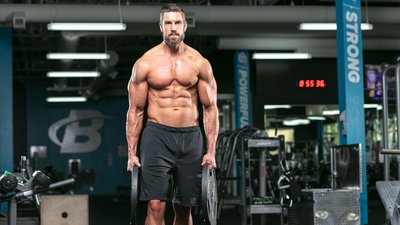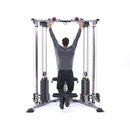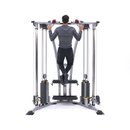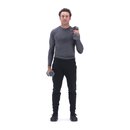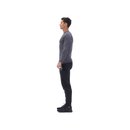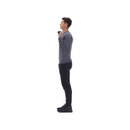Supremely developed forearms radiate pure physical power. Want proof? Look no further than the way Dorian Yates separated himself from the bodybuilding pack—to the tune of six Olympia titles—thanks in part to his bulging blacksmith forearms. Or do look further: Strongmen, powerlifters, top Olympic lifters and bodybuilders, grapplers and fighters, laborers, and bar bouncers run the gamut in physiques, but what they all share are respectable forearms with a strong AF grip.
But it's not all about pretty—or pretty veiny—looks. You use your forearms in almost every strength-training exercise, and the stronger they are, the harder you can squeeze the bar. This engages more muscles, allowing you to lift more weight, which then leads to greater total-body size and strength gains.
The end result is the ability to stir up a cauldron of serious muscle mass and strength. But to get there, you have to get strategic about your training. Put these three short (like, 10 minutes) workouts in your rotation once a week apiece.
No, they won't be easy, and yes, brushing your teeth might be a struggle at first. But do them after your other training, and in a month, you'll have more strength and size everyone can see—and that you can use in the weight room.
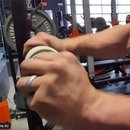
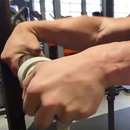


Technique Tips
Towel Pull-Up
Loop a medium-sized towel over a pull-up bar and tightly grab both ends of the towel. From an arms-extended position, pull yourself up until your chin is higher than your hands, hold briefly, then lower yourself down under control to the starting position. Do 2 sets of 8-10 reps. When you can do more than 10 reps, use a dip belt to add more weight.
Alternating Dumbbell Hammer Curl with Pause
Because you use a neutral grip when you're doing hammer curls, you're able to target your forearm muscles much more than you can with dumbbell biceps curls. To take it up another notch, add thick grips. Fat Gripz, the most popular thick-grip brand, increase the diameter of the dumbbell handle from around an inch to 2.25 inches. This forces you to grip the dumbbell much harder and activate the forearm muscles more for greater growth.
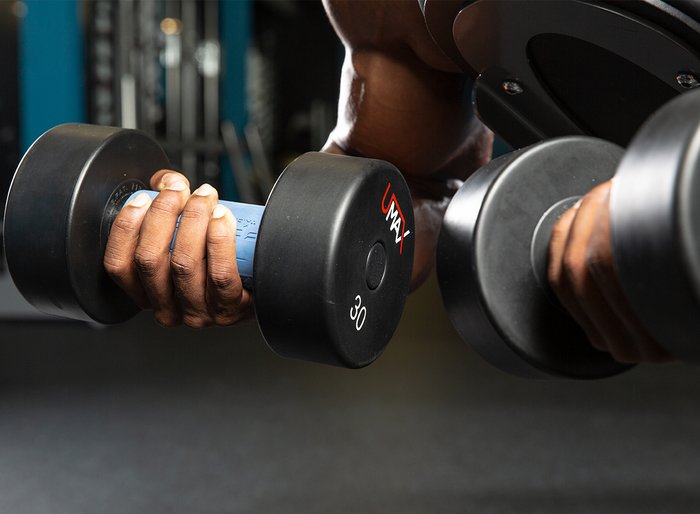
No weight swinging here! Stop for a moment at the top, then lower the weight under control to about 15 degrees short of full arm extension. Squeezing the dumbbell hard, hold it in this position for 3 seconds to really activate the brachioradialis muscle in your forearm. Now, lower the dumbbell to full arm extension and repeat on the other side. Continue in an alternating fashion, performing 6 reps on each side.
Wrist Roller Flexion/Extension
"Wrist rollers are to forearms what barbell squats are to legs—maybe even better," says my colleague Tim Henriques. "Roll-ups work the forearm extensors hard on the way up and work the flexors hard on the way down. They build amazing grip strength."
Hang a resistance band over the end of a barbell in the squat rack set to shoulder height. Hang a dumbbell on the other end of the band, and a weight equivalent to the dumbbell on the opposite side of the barbell to keep the setup balanced. Using the wide diameter of the barbell end gives you the thickness of an Olympic barbell collar, but with the stability of the rack to eliminate potential shoulder fatigue that can limit your performance when you use a traditional wrist roller.
With your feet shoulder-width apart and your arms extended, grab the barbell end with a pronated grip and rotate the bar toward you as if you were revving the throttle on your V-Rod. Once the weight has reached bar height, slowly lower it under control. Once you hit the bottom, that's 1 rep.
After 3 sets, focus on roller flexion. This setup is the exact same as the extension exercise, except you will roll your wrist in the opposite direction. This tiny change totally transforms the training effect, working the flexors on the concentric and extensors on the eccentric.
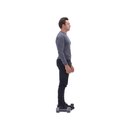
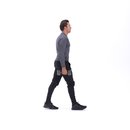
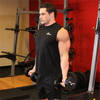





Technique Tips
Dumbbell Farmer's Walk
Lift up the dumbbells, keeping your back straight and your head in a neutral position. Gripping the dumbbells, use short, quick steps to walk as far as you can for 30 seconds. Take a short rest, then repeat.
Time under stress is essential because of the way forearms respond to carrying loads under tension. Your grip needs to be the limiting factor, so don't use wrist straps on this exercise.
If you don't have Fat Gripz, do "towel farmer's walks." Loop a hand towel around the dumbbells and carry them by gripping the towels.
Fat Gripz Zottman Curl
This movement will demolish the muscle fibers of your forearm because of the overloaded slow eccentric. Stand with your arms at your side, holding a dumbbell in each hand. Lift them up to shoulder height using a supinated (palms up) grip. When you get to the top, rotate your grip to a pronated position and then lower the dumbbells using a 5-second negative. With the added difficulty of the Fat Gripz, it'll feel like someone's trying to rip the dumbbells out of your hand.
Don't let them do it. Hang on to those suckers!
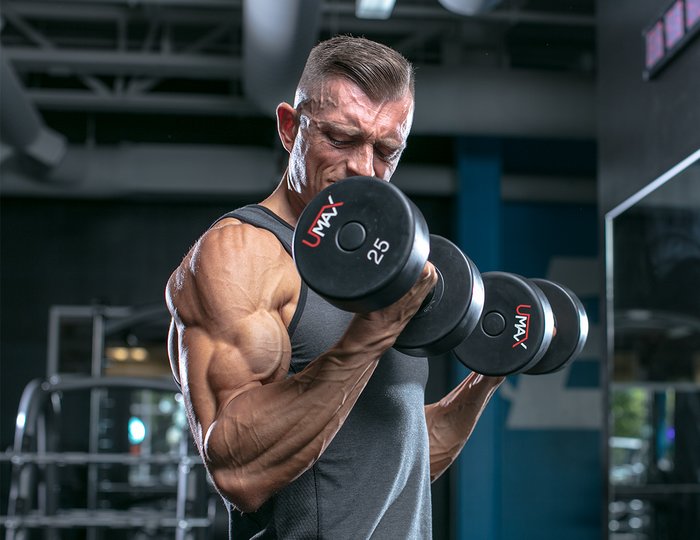
Wrist Roller Ulnar/Radial Deviations
The wrist roller is really great for forearm development, but most people who do it only focus on flexion and extension. Your wrists can move in other ways, too! You'll use the same rack setup as the other wrist roller workout, but with a twist: Put one hand on the outside of the barbell collar. With that hand, you'll focus on ulnar deviation for one set, rolling the bar away from you toward your little finger. Alternate hands for 2 sets.
Then, with the same setup, focus on radial deviation: rolling the outside hand toward your thumb as if you were pulling back on the reins of a horse.
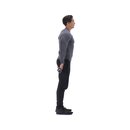
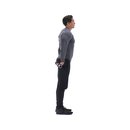
Technique Tips
Reverse Curl
This workout is all about high reps and light weights. Seriously: Use 25-30 percent of what you'd normally use for EZ-bar curls. An empty EZ-curl bar should give you all the challenge you need.
You're going to be doing blood flow restriction, or "occlusion training." Gangsta Wraps from Mark Bell's Sling Shot are just about the perfect tool for the job, but other wrist wraps can also work. Tie them as high as possible on your forearm. On a tightness (or excruciating pain) scale of 1-10, go for a 7.
Behind-the-Back Wrist Curl
This is about as simple a move as it gets. Just use as full a range of motion as possible, and bust out the reps. Rest no more than 20-25 seconds, and without taking the wraps off, go right back to the reverse curls.
The first time you do this workout, 4 minutes should give you all the challenge you want. Try to add 30 seconds a week after, until you get to 6 minutes after a month's time.
If you don't care about the functionality of grip training and just want big forearms, simply doing this workout a couple of times a week could be enough. But if you want to build serious strength to hold onto the bar, add all three workouts to your weekly routine. It could be the most productive 8-10 minutes of your workout, and the payoff in strength will be huge.
Want to dial in your arms with a dedicated plan? Try 30 Days to Your Best Arms from Julian Smith, only in Bodybuilding.com BodyFit Elite! You'll hit biceps, triceps, and forearms with just the right amount of heavy lifting and crazy pumps to add size and definition in just a month!


